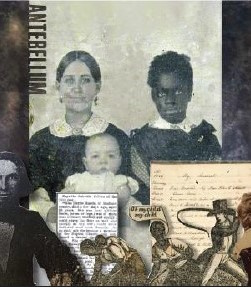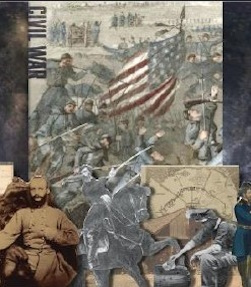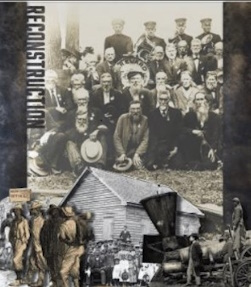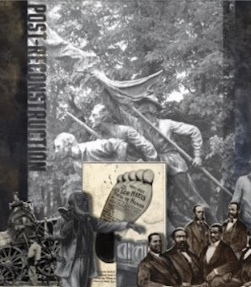The Site: Archaeological Investigations
In 2018, the History Center engaged New South Associates, Inc. of Stone Mountain, Georgia to conduct a geophysical survey and archaeological investigations of four acres within the Arsenal Park site.
From the Management Summary of New South’s final report:
Arsenal Park contains archaeological remains of the North Carolina Arsenal (authorized by Congress in 1836, built 1838-1856) and Fayetteville Arsenal (1861-1865). The North Carolina Arsenal was part of the Federal government’s Atlantic Coast defensive system. Upon completion, however, it served primarily for the storage of arms. At the outbreak of the Civil War in 1861, locals seized the arsenal and turned it over to the State of North Carolina and the Confederate States of America (CSA). The CSA expanded the arsenal substantially beyond its original footprint and renamed it the Fayetteville Arsenal. Although an asset to the Confederate war effort through the production of arms and ammunition, the arsenal never functioned at full capacity owing to shortages of material and skilled labor. The arsenal was destroyed by William T. Sherman’s Federal troops in March 1865 and subsequently, its materials were salvaged by local citizens and the military.
The Center requested a survey to identify archaeological features and deposits and to provide data for making recommendations with regard to mitigating potential adverse effects of the planned undertaking. New South proposed a combination of ground-penetrating radar (GPR) survey and targeted shovel testing to investigate specific GPR anomalies. The Phase I Survey was conducted in stages, beginning with GPR data collection and followed by data processing and analysis, and then shovel testing, laboratory analysis, and reporting.
The full report on these investigations can be found at this link: 5205 Arsenal Park Final
In collaboration with the Museum of the Cape Fear Historical Complex, the History Center also engaged New South Associates to conduct a two-week archaeological investigation and field school at the site of the Arsenal and Armory in the summer of 2018. Below is the Abstract from the final report dated March 6, 2019, which is too large to post in its entirety:
New South Associates, Inc. (New South) conducted a two-week archaeological investigation and field school at site 31CD280, an antebellum and Civil War-era arsenal and armory located in Fayetteville, North Carolina. The investigation was conducted for the North Carolina Civil War and Reconstruction History Center Foundation (the Center) in preparation for the construction of new facilities at Arsenal Park. While the present project was not undertaken pursuant to Section 106 of the National Historic Preservation Act, as no federal lands, funding, or permits are involved, the Center wished to recover important information prior to ground disturbance and provide additional information in support of the interpretation of the Arsenal.
The 2018 archaeological investigation and field school had four principal objectives: 1) to collect data on the Gun Carriage Shop; 2) to ground-truth subsurface Anomaly 5 (Patch et al. 2018); 3) to examine a sandstone feature identified by the Wake Forest Archaeological Laboratory in 2000 (Robinson et al. 2000); and 4) to provide instruction in archaeological methods for field school participants. Fieldwork included machine-assisted excavation of 1,365 square feet. This included backhoe excavation of a 32×36-foot area overlying the sandstone feature and three exploratory trenches (Trenches 1, 2, and 3) located near the Gun Carriage Shop. Thirty-nine test units, totaling 753 square feet, were hand-excavated within site 31CD280.
The units excavated between the Gun Carriage Shop and the Blacksmith Shop (Units 7-10) revealed evidence of intensive Civil War-era destruction activity, machine activity near the Engine House, and twentieth-century in-filling across the central portion of the site. Units 7 and 8 revealed a deep destruction fill deposit near the Engine House. This deposit likely extends over intact Civil War-era buried features.
There were 17 features identified during fieldwork. Most, including the sandstone feature (Feature 15), were architectural/structural and were identified in the scrape (Scrape 1). Post holes indicative of timber supports, and three linear slots of undetermined function were found in Scrape 1. Post features were also identified in Trench 1 and Unit 3. Units 2 and 5 contained two features identified during the excavation of Anomaly 5. Feature 3 was a rubble-filled robber’s trench. Feature 5 was identified as a remnant of the Gun Carriage Shop builder’s trench.
The 2018 investigation indicates site 31CD280 contains intact Civil War-era artifact deposits that could yield significant information on the production of Confederate arms and munitions.

Antebellum
Before the Civil War, the region’s geography, population, economics, and laws shaped the diverse lives of North Carolinians. Enslaved and free Black people rebelled against the institution of enslavement through violent revolt...

The Civil War
After the election of Republican candidate Abraham Lincoln in November 1860, South Carolina and six other states seceded before he took office, but President Buchanan did not initiate hostilities...

Emancipation
In May 1861, General Benjamin F. Butler gave semi-protected status and partial freedom to enslaved people who escaped to Union lines from Confederate territory, considering them essentially “contraband of...

Reconstruction
President Andrew Johnson’s limited Presidential Reconstruction prioritized reconciliation between the North and South. Its effect was to restore the status quo regarding old wealth and power in the South and the political oppression of...

Post-Reconstruction
In the 1880s, struggling farmers united in the Farmers’ Alliance, a national movement that sought agricultural reform and railroad oversight, and formed groups throughout the South...



